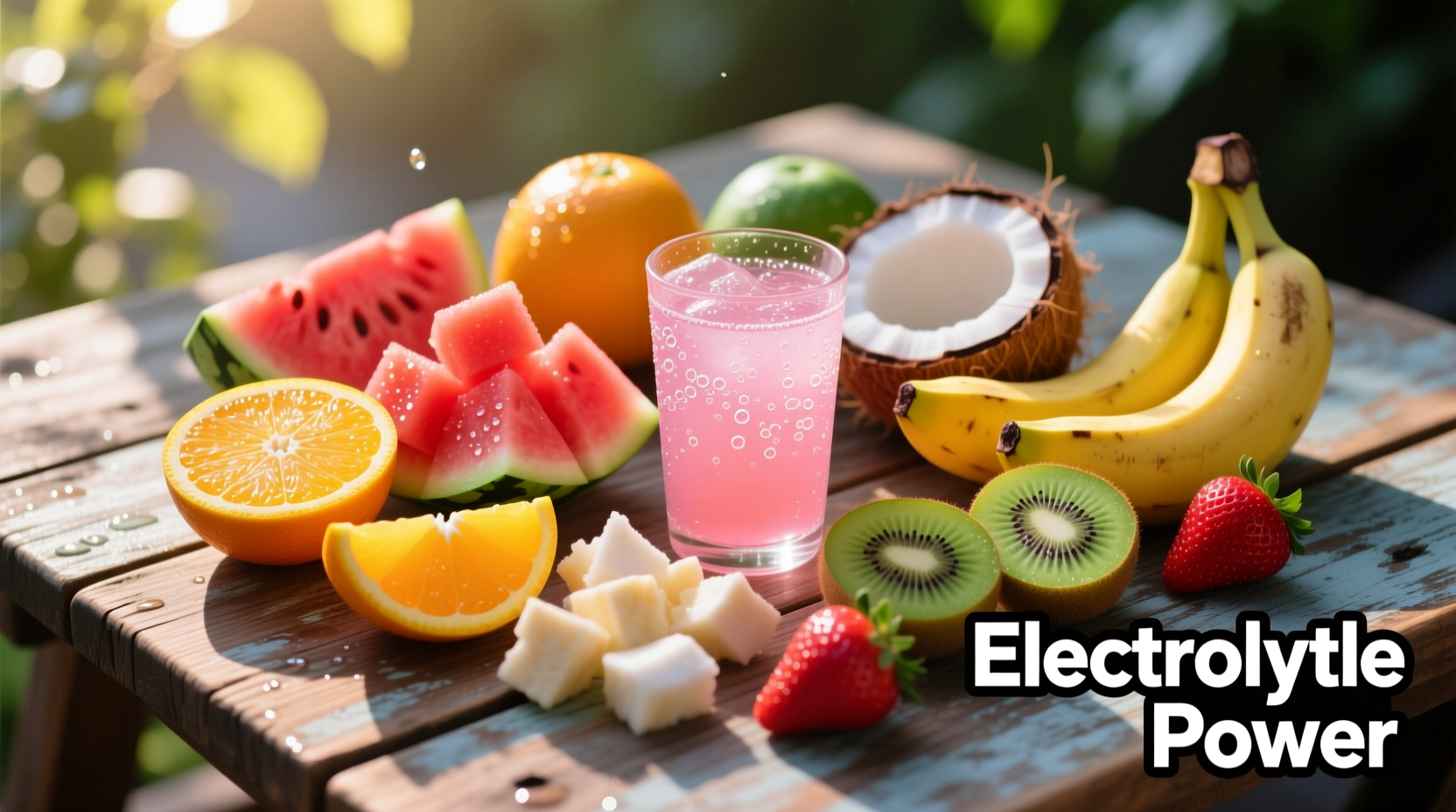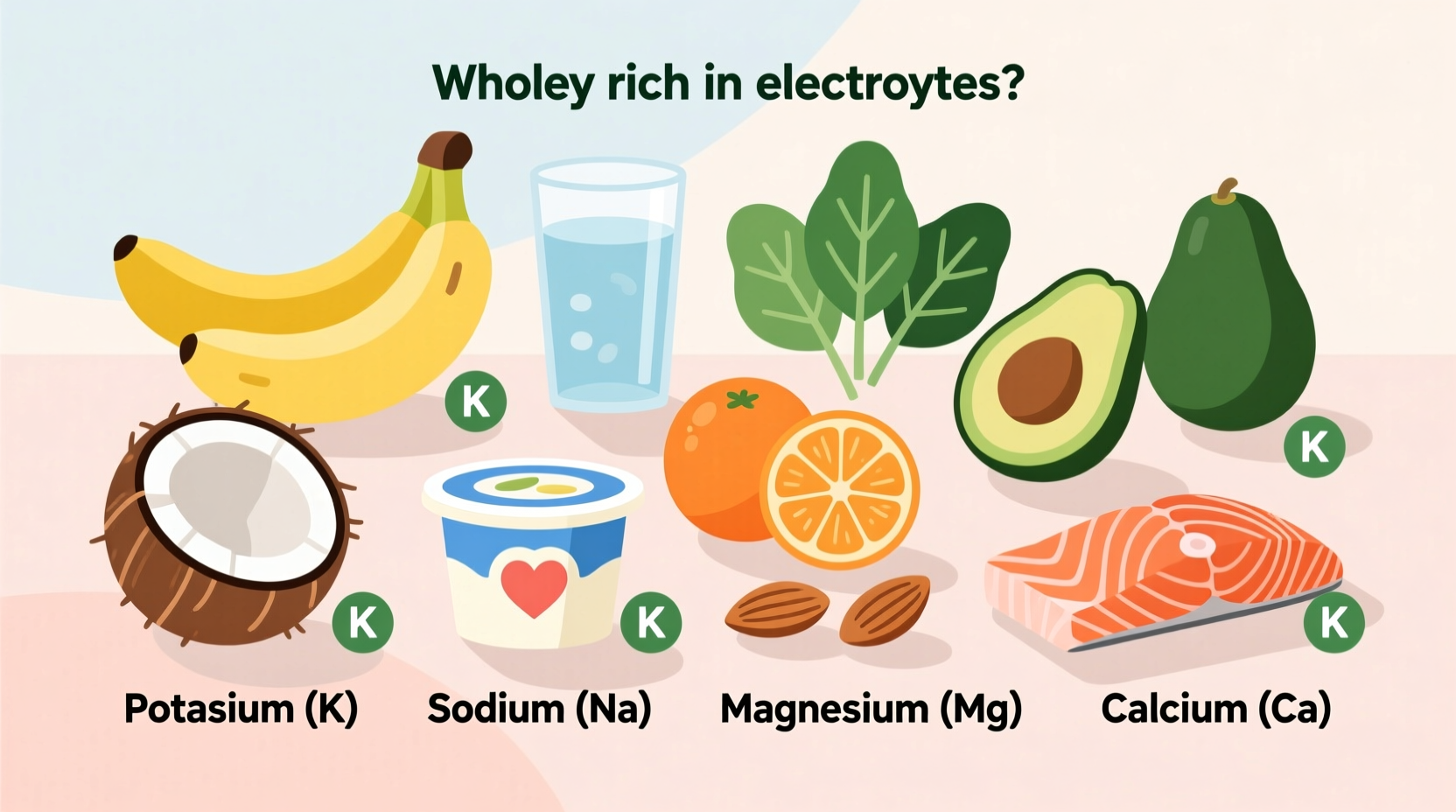When your body needs hydration support—whether after intense exercise, during illness, or in hot weather—knowing which foods naturally replenish electrolytes can make a significant difference in your recovery. Unlike commercial sports drinks packed with sugar and artificial ingredients, whole food sources deliver electrolytes alongside essential vitamins, minerals, and fiber for optimal absorption.
Understanding Electrolytes: Your Body's Essential Conductors
Electrolytes are minerals with an electric charge that conduct electrical impulses throughout your body. The primary electrolytes—sodium, potassium, magnesium, calcium, chloride, and phosphate—work together to maintain fluid balance, enable muscle contractions, transmit nerve signals, and regulate your body's pH levels. When you sweat, become ill, or simply don't consume enough of these vital minerals, you may experience fatigue, muscle cramps, headaches, or more serious complications.
According to the USDA Food and Nutrition Information Center, the average adult requires specific daily amounts of each electrolyte to maintain proper bodily function. While individual needs vary based on activity level, climate, and health status, understanding which foods naturally contain these minerals helps you make informed dietary choices.

Top Food Sources for Each Essential Electrolyte
Not all electrolyte sources are created equal. Different foods provide varying concentrations of specific electrolytes. Here's what you need to know about the best natural sources:
Potassium Powerhouses
Potassium regulates fluid balance, muscle contractions, and nerve signals. The National Academies of Sciences, Engineering, and Medicine recommends adults consume 2,600-3,400 mg daily. Excellent food sources include:
- Bananas (422 mg per medium fruit)
- Spinach (839 mg per cooked cup)
- Avocados (708 mg per whole fruit)
- Sweet potatoes (542 mg per medium potato)
- White beans (502 mg per half cup)
Sodium Sources Beyond the Salt Shaker
While many people consume excess sodium through processed foods, natural sodium sources provide this electrolyte alongside other nutrients. The recommended daily intake is 1,500 mg, though most adults consume significantly more. Natural sources include:
- Celery (80 mg per cup)
- Beetroot (65 mg per medium beet)
- Seaweed (varies by type, up to 2,000 mg per ounce)
- Dill pickles (570 mg per medium pickle)
- Olives (525 mg per ounce)
| Electrolyte | Top 3 Food Sources | Amount per Serving | Daily Value % |
|---|---|---|---|
| Potassium | Spinach (cooked) | 839 mg | 18% |
| Magnesium | Almonds | 80 mg | 19% |
| Calcium | Yogurt | 300 mg | 23% |
| Sodium | Seaweed | 2,000 mg | 87% |
Magnesium-Rich Options for Muscle Function
Magnesium supports over 300 biochemical reactions in your body, including energy production and muscle function. The recommended daily intake is 310-420 mg. Top food sources include:
- Almonds (80 mg per ounce)
- Black beans (60 mg per half cup)
- Edamame (50 mg per half cup)
- Dark chocolate (64 mg per ounce)
- Pumpkin seeds (156 mg per ounce)
Research from the National Institutes of Health Office of Dietary Supplements indicates that nearly half of Americans don't consume adequate magnesium through their diet, which can contribute to muscle cramps and fatigue—particularly during physical activity.
Calcium Sources Beyond Dairy
While dairy products are well-known calcium sources, many non-dairy options provide this essential mineral for bone health and nerve function. The recommended daily intake is 1,000-1,200 mg. Consider these alternatives:
- Fortified plant milks (300 mg per cup)
- Kale (179 mg per cooked cup)
- Chia seeds (179 mg per ounce)
- Almonds (76 mg per ounce)
- Canned sardines (325 mg per 3 ounces)
Practical Strategies for Electrolyte Balance
Instead of reaching for processed electrolyte drinks, incorporate these whole food strategies into your daily routine:
Morning Hydration Boost
Start your day with coconut water (rich in potassium and magnesium) mixed with a squeeze of fresh lime. Add a pinch of high-quality sea salt to enhance electrolyte absorption. This combination provides natural electrolytes without the added sugars found in commercial sports drinks.
Post-Workout Recovery Meals
After exercise, pair potassium-rich bananas with magnesium-packed almonds for balanced electrolyte replenishment. A smoothie with spinach, avocado, coconut water, and a scoop of Greek yogurt delivers multiple electrolytes in one delicious drink.
Electrolyte-Rich Salads
Create salads with dark leafy greens (potassium and magnesium), avocado (potassium), pumpkin seeds (magnesium), and olives (sodium). Dress with olive oil and lemon juice to enhance mineral absorption.
When Food Sources Aren't Enough
While whole foods should be your primary electrolyte source, certain situations may require additional support. The Mayo Clinic notes that during prolonged intense exercise (more than 60-90 minutes), illness with vomiting or diarrhea, or in extremely hot conditions, you may need additional electrolyte support.
However, for most daily activities and moderate exercise, food sources provide sufficient electrolytes without the need for supplements. The natural balance of minerals in whole foods prevents the risk of overconsumption that can occur with electrolyte tablets or concentrated drinks.
Common Misconceptions About Electrolyte Foods
Several myths persist about electrolyte-rich foods. Understanding these can help you make better choices:
- Myth: Only athletes need electrolyte-rich foods
Fact: Everyone requires electrolytes daily for basic bodily functions - Myth: All sports drinks are good electrolyte sources
Fact: Many contain excessive sugar and artificial ingredients with imbalanced electrolyte profiles - Myth: You can't get enough electrolytes from food alone
Fact: A varied whole-food diet typically provides adequate electrolytes for most people











 浙公网安备
33010002000092号
浙公网安备
33010002000092号 浙B2-20120091-4
浙B2-20120091-4